|
BOOK NOW |
ASK ABOUT YOUR PAIN |
Home > Blog > Physiotherapy > Conditions We Treat > Knee Pain > Knee Sprain Physiotherapy Singapore
Knee Sprain Physiotherapy Singapore
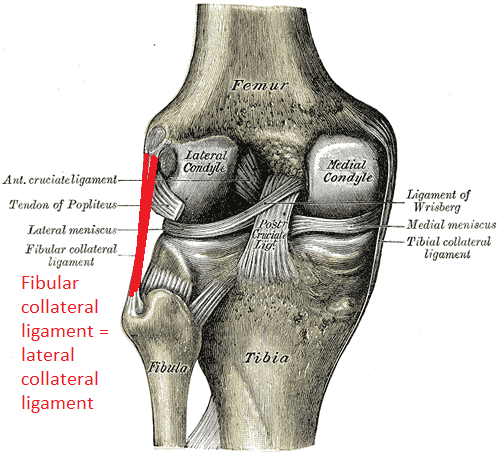
A knee sprain (also known as knee strain or knee ligament tear), happens when one of the four knee ligament overstretches and injures (potential rupture).
The standard knee sprain symptoms usually includes
- knee ligament pain
- swelling and warmth in the knee
- knee joint instability
- difficult to straighten or bend the knee
The most common causes of knee sprain?
- Sudden large force going through the knee
- Sudden twisting of the knee
In some cases, knee surgery may be necessary or medically required - let's cover more in this knee sprain article and knee pain physiotherapy below.
first of all, What Is A Knee Sprain?
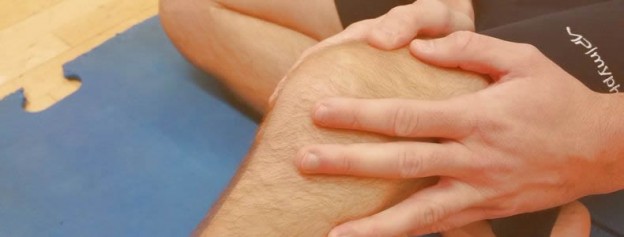
Our knees have four key ligaments, and for knee sprains, that means that at least one of the four knee ligaments had been stretched too much that some or all of the ligamental fibers are damaged.
As I mentioned earlier, spraining one's knee is usually caused by:
- Strong force pushing through the knee, such as motorvehicle accidents or being tackled from behind
- Sudden twisting motion such as when suddenly changing direction or falling awkwardly
The four knee ligaments are:
- Front: anterior cruciate ligament (ACL)
- Behind: posterior cruciate ligament (PCL)
- Inner side: medial collateral ligament (MCL)
- Outer side: lateral collateral ligament (LCL)
The function of the ligaments are generally to keep the knee joints secure, stable, not overstretch and protect the knee from injuries.
Common Causes of knee sprains
ANY movements or forces that causes the knee to overstretch will lead to a knee sprain...and sometimes, more than one knee ligament can be injured at the same time, depending on the force and angle of the activity.
Anterior Cruciate Ligament (ACL) Sprain
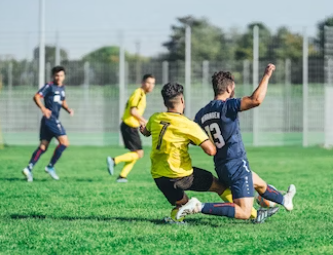
Sprains of the knee anterior cruciate ligaments are typically caused by
- knee hyperextensions
- sudden knee twists
where the knee twists or bent back too far.
Note: Most of the ACL knee sprains happen due to...NON contact ie not caused by contact sports.
Posterior Cruciate Ligament (PCL) Sprain
Knee PCL sprains usually happens when a force goes through a bent knee, such as falling onto a bent knee or in car accidents where one's knee(s) hits the dashboard.
In this cause, the thigh muscle moves on forward but the shin / bottom part of leg is still rooted, causing a shearing forward motion, overstretching and sometimes rupturing the PCL.
Knee posterior cruciate ligament injuries are less than 20% of knee ligament injuries.
Knee Medial Collateral Ligament (MCL) Sprain
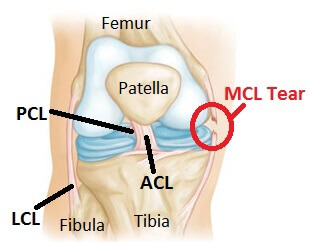
For knee MCL sprains, it's caused when there is a force from the outer side of the knee pushing through / into the inner side of the knee, especially when the foot is rooted to the ground.
This can happen with
- falls
- low kick in MMA / kickbocking
- side tackle
- accidents
Knee Lateral Collateral Ligament Sprain
Knee LCL sprains are the reverse of the MCL injuries, ie force going into the knee from the inner part of the knee, pushing outwards.
Sometimes, if the angle is bad or the force is big enough, patients may end up with multiple injuries to the knee joint, such as
- ligaments
- cartilage
- meniscus
That being said, the most common knee ligamental injury combo is the ACL and MCL injury / tears.
knee Ligament injury and Sprain Classification
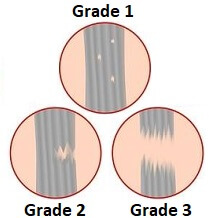
Knee ligament sprains have three types of grades / classification:
- Knee Sprain Grade 1: Less than 10% of the knee ligament fibers are damaged or torn, meaning that the symptoms such as knee pain or swelling is usually fairly mild. Most patients knee ligaments will heal naturally with no need for knee surgery or injections.
- Knee Sprain Grade 2: There is more ligamental fiber damage at this grade, with more ligament fibers torn BUT the ligament is still connected together. Patients have moderate / more pain, swelling and even some levels of knee instability as well.
- Knee Sprain Grade 3: This grade means that the ligament has ruptured ie split into 2 complete and separate parts, with a lot of knee pain, swelling and instability too. It may be medically necessary for reconstructive surgery at this stage.
SYMPTOMS of Knee Sprain
The most common symptoms are
- knee pain
- knee swelling
- knee stiffness
- knee bruises
which can make it harder to stand, walk around and definitely harder to jog or put more load through the knee.
For moderate to severe knee ligament sprains, there can be knee instability too, which can cause it to unbuckle (give way).
Sometimes...knee symptoms dont show up until a couple of days later. So if you play a game, and felt a strain or pull, you may not feel anything during the activity or the next couple of days.
Your knee pain will give you hints of which or how severe the knee ligament you have injured or sprained:
- Swelling - if it's very little swelling, it's likely a mild knee sprain, Grade 1. But if the swelling is very severe, it's possible Grade 2 or 3.
- Instability of the knee usually points to Grade 2 or 3 knee ligament sprain. If there's buckling of knee, there's a high chance of full ligament rupture (especially if you heard/experienced a popping sound)
- Location: inner side of knee, possibly knee medial collateral ligament injury
- Location: front, possibly anterior cruciate ligament
- Location: back, possibly posterior cruciate ligament
- Location: outer side of knee, possible knee lateral collateral ligament injury
What To Ask Your Doctor
If you're planning to see a doctor for your sprained knee, or you'd been given a knee sprain diagnosis by the attending doctor, here are some questions you should also ask the doctor:
- Which knee ligament is sprained or damaged?
- How bad is the sprain ie what Grade is it?
- Do I need knee surgery?
- Can I still drive safely with this knee injury or pain?
- What treatments should I take? Can I start knee physiotherapy immediately?
If you want an orthopedic doctor recommendation (whom we trust and have worked with for years) for your bone, muscle or joint pains and injuries, go here.
Knee Sprain Treatment
In the early / beginning stage of knee sprain, what our knee physios will focus on is to first quickly and rapidly work on
- reducing knee pain (pain relief)
- reducing swelling in the knee
By reducing pain, you can participate in more normal activities such as walking, going to work, self care etc, and reducing swelling will decrease knee joint stiffness too.
After that, we'll need to start knee physiotherapy
Once the knee pain and swelling is being managed, and you can comfortably start moving your painful knee, next, we will start some knee exercises to regain knee movement / range of motion.
As you extend and bend your knee actively with knee exercises, it will also improve your knee strength and function too. These exercises are really, really important after a knee sprain injury to help your knee fully recover, so you must do them diligently okay.
At the later stage, we will work on
- knee strengthening with resistance
- balance training (lower and higher)
- activity and sports-specific knee training
so that you can get back to 100% knee function, power and stability.
Knee braces & supports
Some patients may benefit from having a knee brace to support the knee - refer to the shop section. Usually the strength of knee brace required depends on how much pain, instability or support is required:
- Grade 1 knee sprains - simple, basic knee brace will do
- Grade 2 knee sprains - advanced ones with more strapping and support
- Grade 3 knee sprains - usually at this stage, you may benefit from knee ligamental reconstruction surgery, but if you prefer bracing, you will need one with the best support, which tends to be elite-grade knee braces
if you need knee surgery
Let me say this upfront - most of the time, most patients with knee sprains will likely not need invasive knee surgeries or ligament reconstruction surgeries (like I did).
Only a minority handful of knee sprains will benefit from a knee surgery, and the criteria are:
- PAIN: how frequent, persistent and intense is the knee pain
- INSTABILITY: is the knee buckling or unstable all the time, causing difficulty with walking? Plus each time the knee buckles, there is damage to the knee joint, meniscus and cartilage too
- GOAL: if patient was very active and wants to go back to high intensity sports, then it's high chances of needing a surgery
what's the common Knee Sprain Recovery Time
This is the golden question that every patient will ask us, which is usually a type of
- how many sessions of knee physiotherapy is needed
- how long will it take for the knee sprain to recover
Other than individual healing rate (genetics), compliance and response to knee physiotherapy, knee sprain recovery will take roughly:
- Grade 1: 2-4 weeks
- Grade 2: 4-8 weeks
- Grade 3: anything from 3-12 months, depending on if surgery or not, how many ligaments are injured, etc